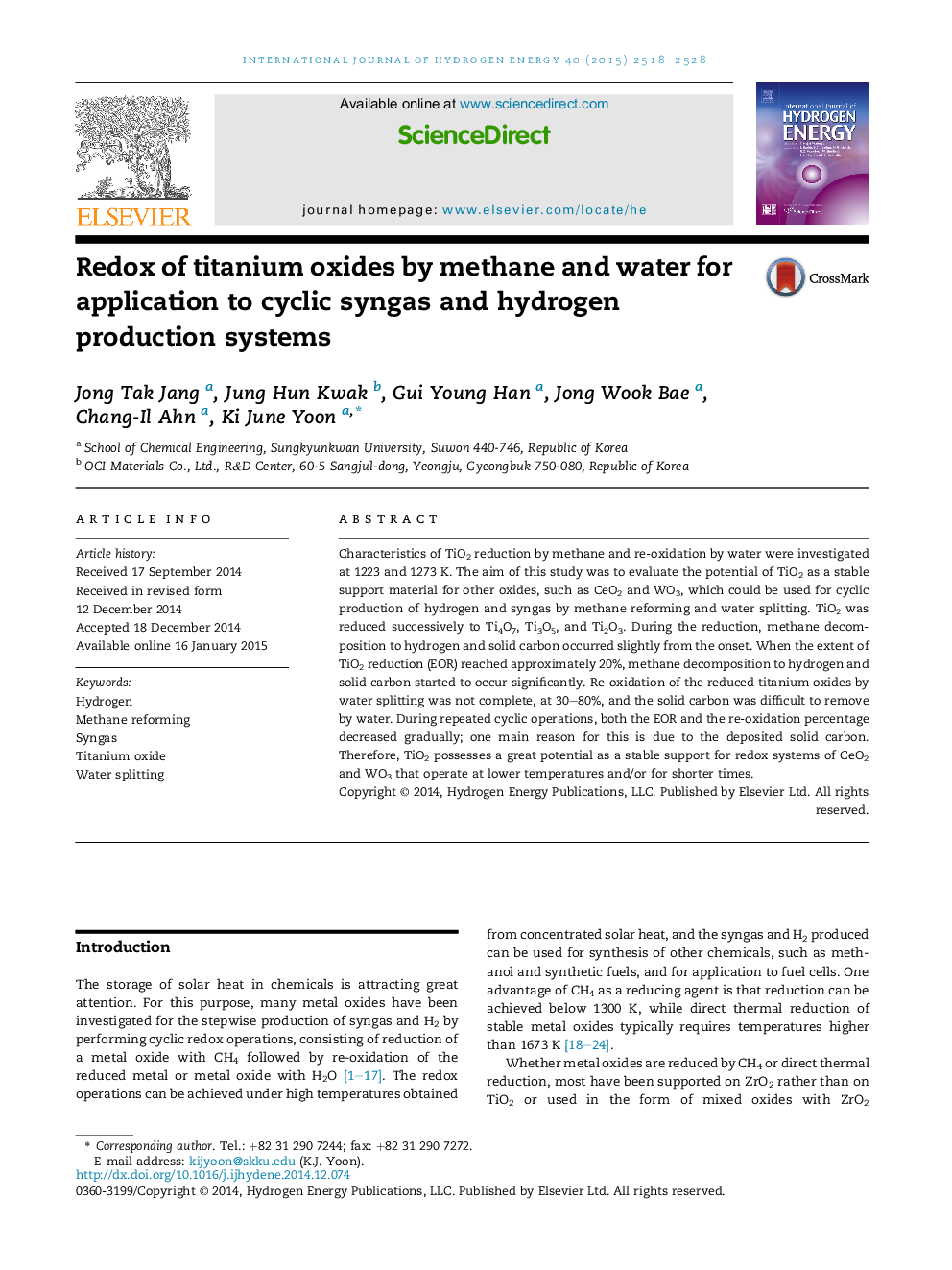| Article ID | Journal | Published Year | Pages | File Type |
|---|---|---|---|---|
| 1270018 | International Journal of Hydrogen Energy | 2015 | 11 Pages |
•Stepwise production of syngas and H2 by redox of TiO2 is examined.•Detailed reduction characteristics of TiO2 during CH4 reforming are studied.•Re-oxidation of reduced titanium oxides by water splitting was not complete.•Cyclic redox operations are repeated to evaluate the long-term stability.•TiO2 possesses a great potential as a stable support for other redox systems.
Characteristics of TiO2 reduction by methane and re-oxidation by water were investigated at 1223 and 1273 K. The aim of this study was to evaluate the potential of TiO2 as a stable support material for other oxides, such as CeO2 and WO3, which could be used for cyclic production of hydrogen and syngas by methane reforming and water splitting. TiO2 was reduced successively to Ti4O7, Ti3O5, and Ti2O3. During the reduction, methane decomposition to hydrogen and solid carbon occurred slightly from the onset. When the extent of TiO2 reduction (EOR) reached approximately 20%, methane decomposition to hydrogen and solid carbon started to occur significantly. Re-oxidation of the reduced titanium oxides by water splitting was not complete, at 30–80%, and the solid carbon was difficult to remove by water. During repeated cyclic operations, both the EOR and the re-oxidation percentage decreased gradually; one main reason for this is due to the deposited solid carbon. Therefore, TiO2 possesses a great potential as a stable support for redox systems of CeO2 and WO3 that operate at lower temperatures and/or for shorter times.
Graphical abstractResults of repeated cyclic operations at 1223 and 1273 K for TiO2. (Gradually decreasing CO and H2 yields shows that TiO2 possesses a great potential as a stable support material.).Figure optionsDownload full-size imageDownload as PowerPoint slide
